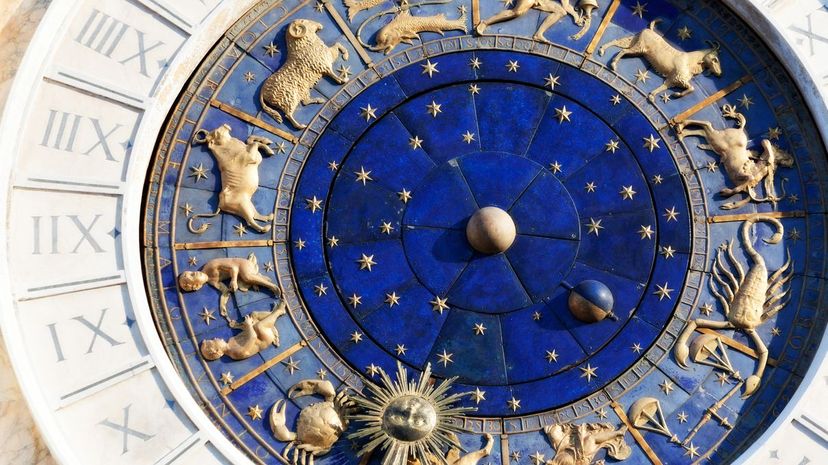
About This Quiz
What started as a calendrical system in the ancient world has captivated the globe ever since. By assessing the movements and positions of the stars, astrologers have claimed to divine insights about life on Earth since as far back as the second millennium B.C. While astrology lost its reputation as a bonafide science after the discoveries of heliocentrism and Netwon's law, it nonetheless continues to prevail as a cultural phenomenon worldwide.Â
There are many branches of astrology derived from cultures like the Hindus, Chinese and Maya. Eventually, the zodiac caught on in the Western world, with figures like Benjamin Franklin and Thomas Jefferson being strong proponents. Just as Western astrology's popularity began to decline, British astrologer R.H. Naylor wrote a horoscope for Princess Margaret upon her birth. The world adored it. He started a weekly newspaper column, and soon enough, a global trend was born. These days, you can of course find your horoscope in magazines and papers across the world.Â
So, whether you believe that your sun sign in Virgo explains your pickiness or that your Scorpio designation is to blame for your unbridled intensity, there's a lot of history to learn about this beloved tradition. How much do you know about what's in the stars? Take the following quiz to divine the truth!Â
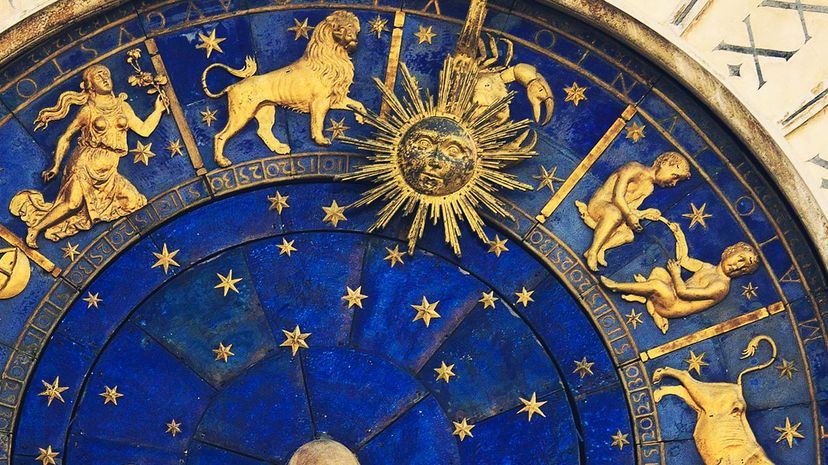
The 12 zodiac signs (Aries, Taurus, Gemini, Cancer, Leo, Virgo, Libra, Scorpio, Sagittarius, Capricorn, Aquarius, Pisces) represent the earth's 24-hour rotation around its axis. The zodiac wheel, meanwhile, represents the annual rotational movement of the sun.
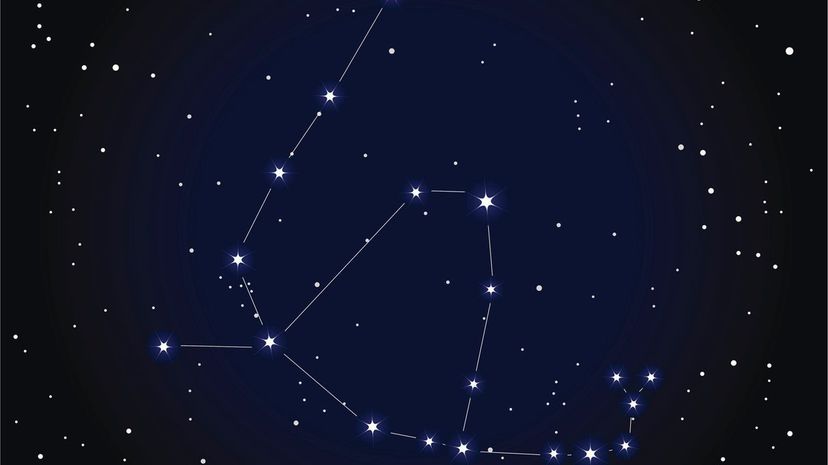
Although astronomers discovered it in 1604, Ophiuchus, located just northwest of the Milky Way, remains one of the least well-known constellations. The name stems from the Greek "serpent-bearer" and is symbolized by a man with a snake in his grip.
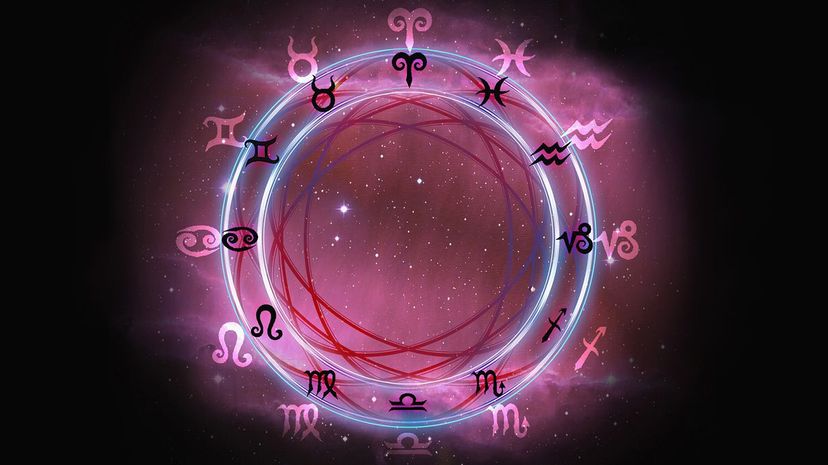
Aries is the first sign of the zodiac and spans from March 21 to April 20 each year. Kicking off spring equinox, Aries appropriately symbolizes birth, fertility and the fruition of life.
Advertisement

The last Zodiac sign, Pisces, represents death and consciousness. The sign stretches from February 19 through March 20, and astrologers also deem Pisces among the more enigmatic and mysterious of the signs.
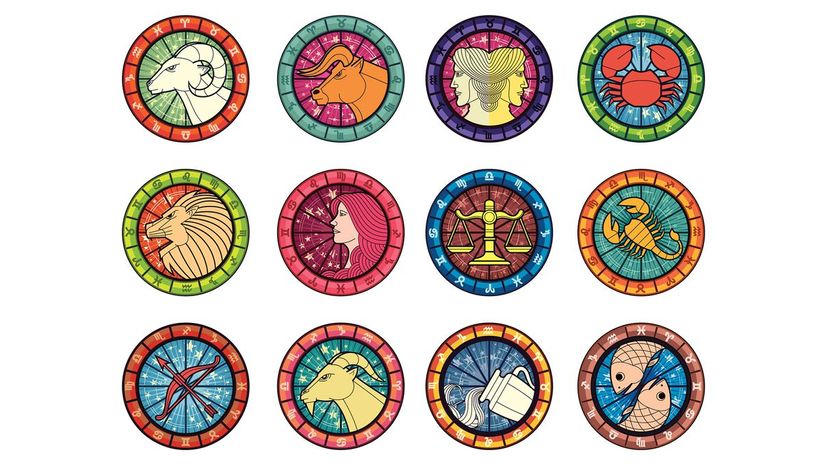
The twins represent Gemini, a sign characterized by its dual nature. Astrologers often describe Geminis as possessing two different personalities, and they are also known to be very flexible.

Given the name, one might assume that "Ares" is an air sign, but it's actually a water sign. Capricorn, Virgo and Taurus are earth signs, which tend to be practical and grounded in reality. If you need someone to plan or analyze, Earth signs have your back.
Advertisement

Astrology may have simmered out and died in academic circles, but it remains quite popular in the cultural sphere. Some may check their horoscope "just for fun," but at least 25% in one poll admit they believe it has some impact on their lives.
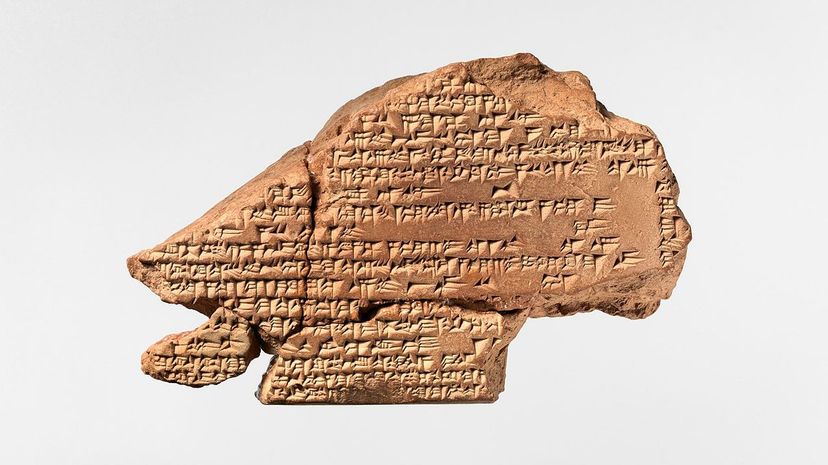
Ancient Mesopotamians separated the "Enūma Anu Enlil" into these four distinct categories named after chief gods associated with the contents: Sin (the moon), Shamash (the sun), Adad (the weather god) and Ishtar (Venus). This text contains omens about a range of phenomena including crescents, eclipses, two suns, thunder, lightning and risings of the planets.
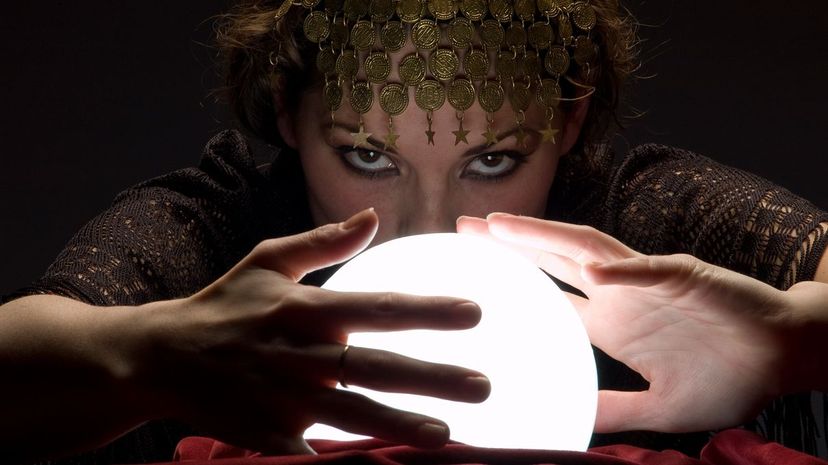
According to the American Federation of Astrologers, there are more than 7,000 professional astrologers in the U.S. Despite astrology's decline in academic spheres, it continues to maintain social relevance.
Advertisement

Cancer, Scorpio and Pisces are water signs. Astrologers characterize water signs by their fluidity. They tend to 'swim' easily from their imagination to reality and back, making them a highly sensitive and creative bunch.
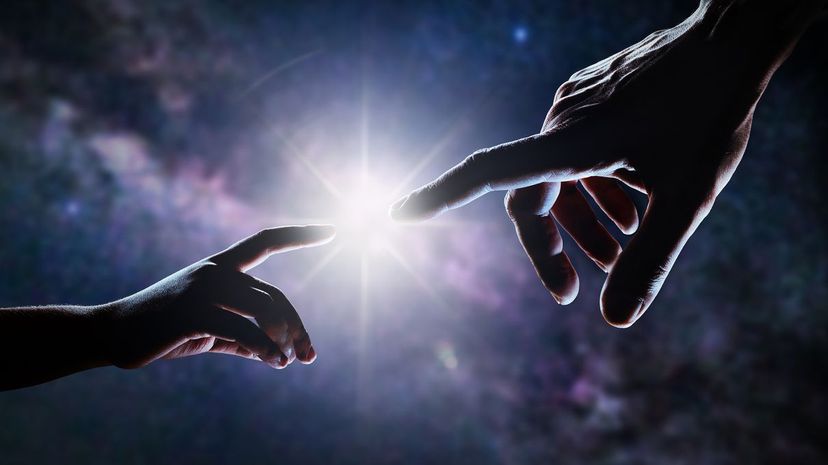
While many versions of astrology ascribe to a mechanistic view of the universe, ancient peoples like the Harranians and the Hindus believed that the planets functioned like powerful deities. As such, they believed one could persuade these godlike beings or communicate with them supernaturally.
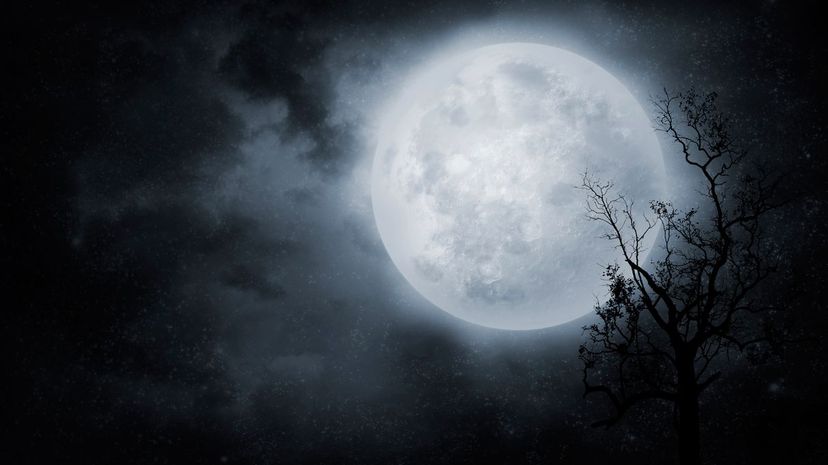
Astrologers use a calculation that includes one's birth date, time of birth and place of birth to determine their moon sign. The moon sign reveals your inner-most emotions and mood, which may or may not contradict your external behavior. Some people possess the same sun and moon sign, for instance, but many do not.
Advertisement
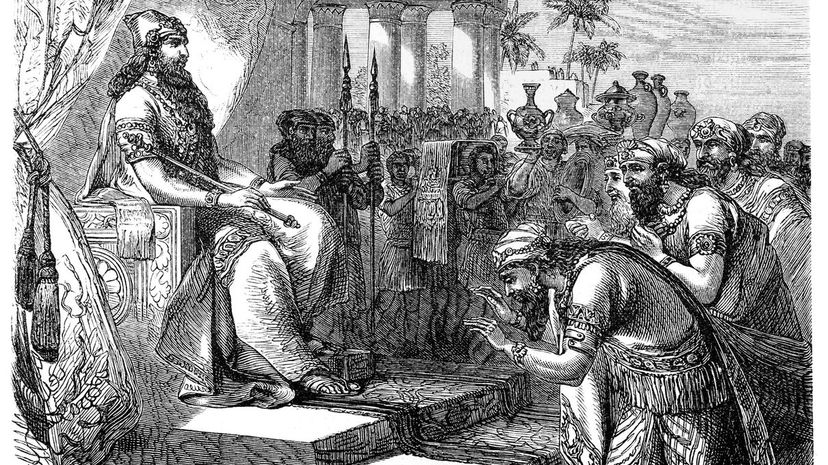
According to historians, the planets sometimes revealed to ancient Mesopotamians insights about illness, epidemics or significant weather events. More often, though, they reportedly foretold information about military matters or the personal lives of the ruler and family.
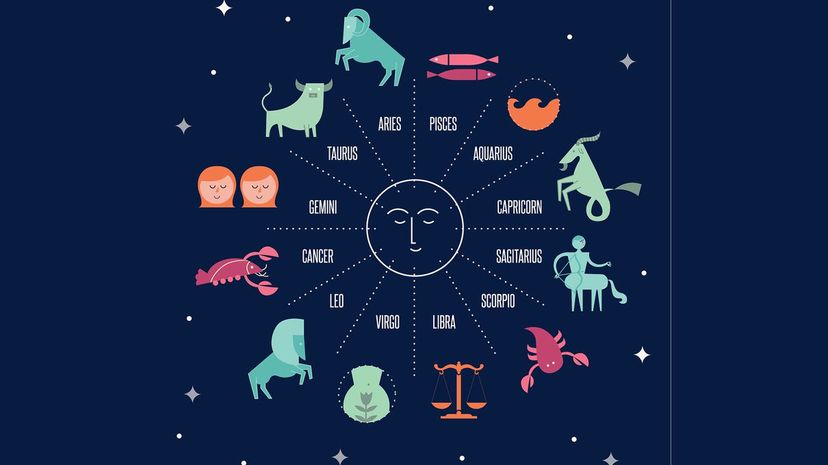
The Babylonians divided the 360 degrees of the sun into 12 equal parts, which equal 30 degrees each. They called each sign the domicile of a planet and subdivided them into units of 10 degrees called "decans."
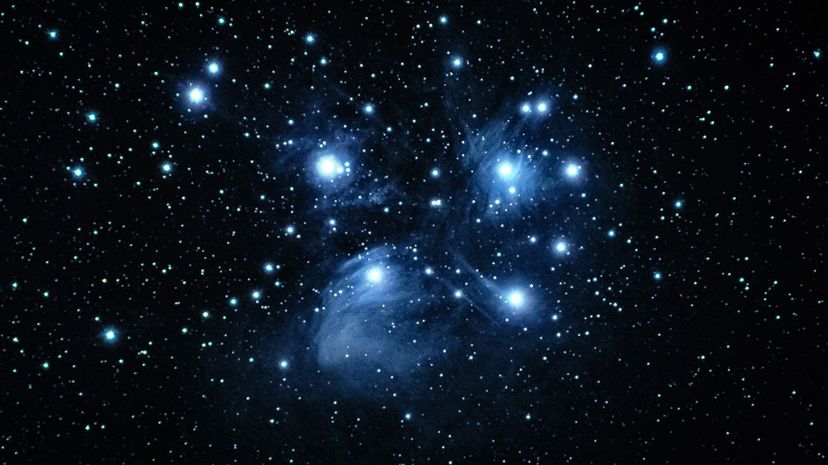
Interrogatory astrology is a type of consulting that remains very close to divination, rather than the determinism inherent in other types of astrology like catarchic. It requires that the astrologer prepare to "read" a situation through rituals and purification practices.
Advertisement

Air signs include Aquarius, Libra and Gemini. Astrologers typically portray these signs as individuals who express their emotions freely and communicate effectively. They tend to be idealistic and open to the ideas of others.

Fire signs include Aries, Leo and Sagittarius. Like fire, astrologers characterize them for their spontaneity and intense passion. They tend to be excitable, impulsive and incredibly persuasive, according to devout astrology followers.

According to one study, there are more Scorpio major world leaders than any other signs. Known for their ambition, famous Scorpios include Theodore Roosevelt, Marie Antoinette, Hillary Clinton, Indira Gandhi, Robert F. Kennedy, Martin Luther and Leon Trotsky.
Advertisement

The Mandaeans are a Gnostic sect that still exists in Iraq and Khuzistan. The ancient book explores the concept of celestial omens, but historians remain unsure whether the ideas stemmed from Mesopotamia, the Greeks or Indian traditions.

Heavily influenced by Babylonian ideas, the Magusaeans' ideas ultimately spread to the Greeks. In addition to Pliny the Elder's works, they wrote "Geoponica," an important collection of agricultural folklore and beliefs.

The zodiac was originally created as an agricultural calendar as a way to help farmers track their harvests and know when to sow seeds. They used the position of the star constellations in the sky to do so.
Advertisement
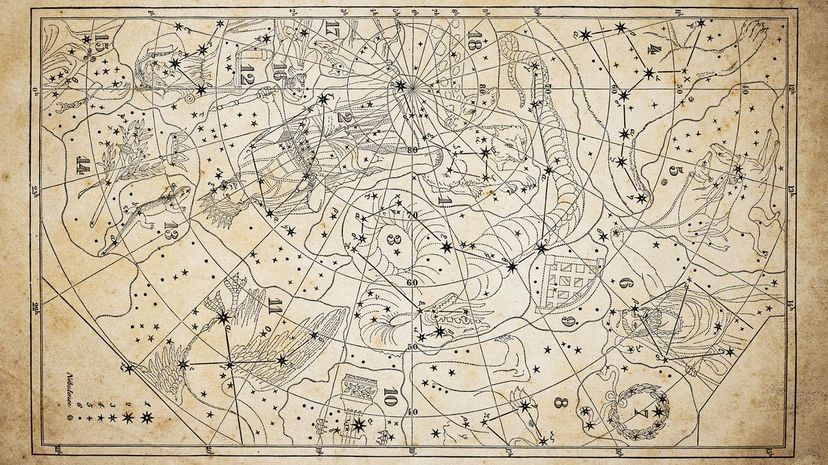
The Hellenistic philosophy period of Western philosophy starts just after Aristotle's ideas and concludes with the rise of Neoplatonism. These astrologers believed that the sun and moon revolved in orbits with centers near Earth's center and that the stars remained fixed around a finite sphere.

While scientists historically ascribed to tenets of astrology, today, most classify the practice as a pseudoscience. This means that the facts intrinsic to astrology remain incompatible with the scientific method. The term is often used pejoratively to describe subjects like astrology, alchemy and alternative medicine.
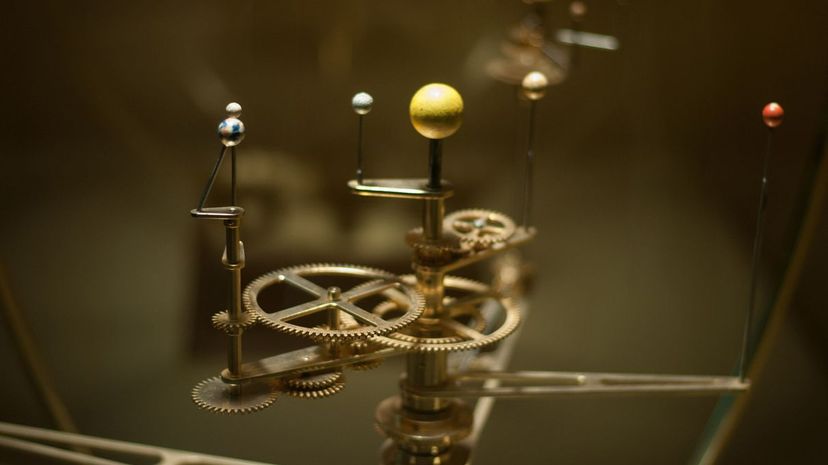
Catarchic astrology directly opposes genethlialogy, which determines a solidified fate based on one's birth. This is the type of astrology that became popular in Mesopotamia. Essentially, rather than the cards being set in stone, one could view the cards and alter them.
Advertisement

The Indians added an intricate system of three categories of yogas, or planetary combinations, which correspond to the different zodiac domiciles. They also incorporated planetary "Dashas," or directional effects, which continue to distinguish Hindu astrology from Western astrology to this day.

In India, only a small percentage of the elite have been trained in Western physics to this day. As a result, astrology continues to retain scientific validity, and several prominent universities offer advanced degrees in the subject.
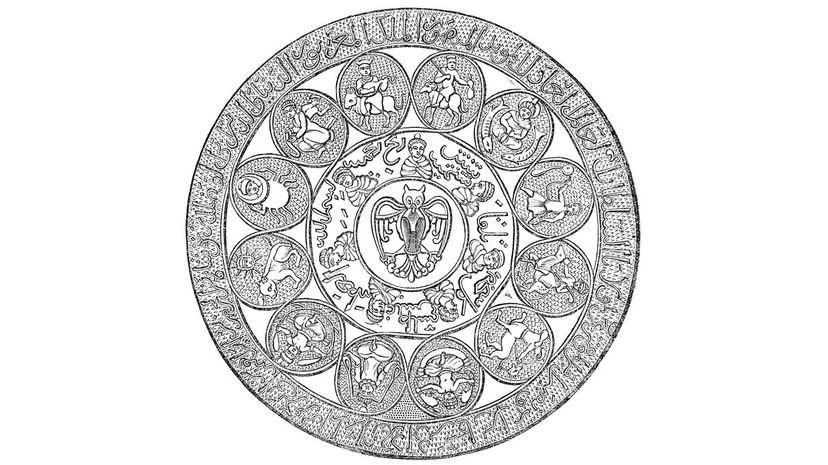
Astrology entered the Islamic tradition through three distinct paths: Hellenistic, Indian and SÄsÄnian astrology. Islamic society (AbÅ« MaÊ¿shar in particular) then introduced Harranian astrology through the incorporation of astral influences based on Aristotelian physics.
Advertisement
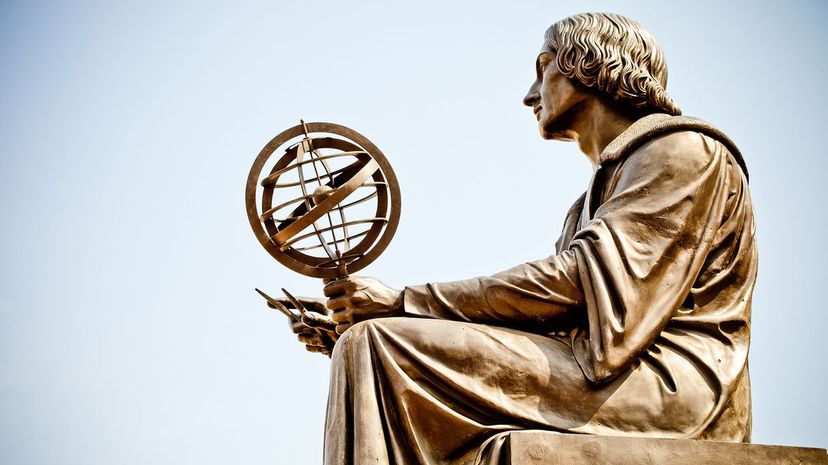
In the 16th century, Copernicus effectively displaced Earth from the center of the universe, posing a logistical challenge to the entire crux of astrology. Soon after, the ideas of Galileo, Johannes Kepler, Descartes and Newton caused astrology to lose its scientific integrity. Kepler tried to reconcile astrology with his theory of mechanistic physics but failed.

Ptolemy was a famous astronomer in the second century A.D. In "Work on Astrology," he compiled information about lunar omens from a papyrus dating to about 500 B.C. as well as fragments of a Greek text written in the second century B.C., which King Nechepso wrote to the priest Petosiris.

A priestly or prophetic figure, the baru interpreted the celestial "omina," or ancient warnings, from the sky and passed the information on to the ruler. The baru would also advise the leader on how to best avoid negative fates via a strategic plan of action.
Advertisement

According to FBI data on criminals and birth dates, some conclude that cancers must be the most dangerous of all the zodiac signs. Not only have police arrested them in the U.S. more frequently, but they also allegedly commit more serious crimes.
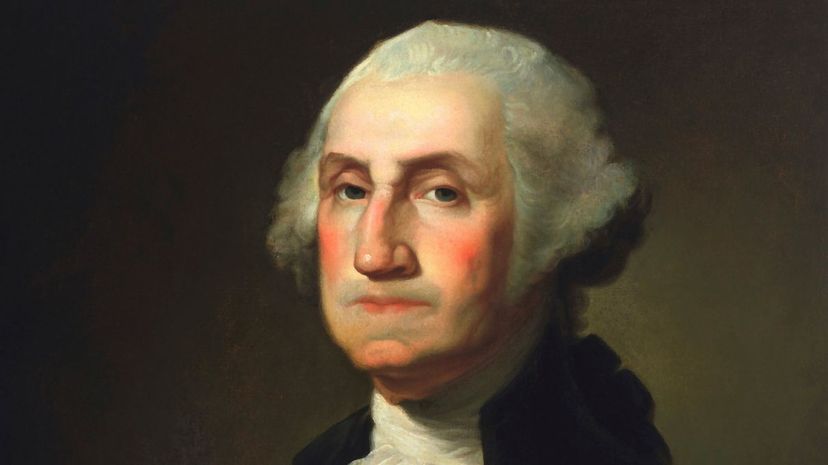
Scorpio and Pisces signs have historically held U.S. presidential office more frequently than any other. Gemini presidents, meanwhile, are the least common - there have only been three in history.

Represented by the balance, astrologers appropriately say that Libras love to attain balance and harmony in their lives. They tend to appreciate high art and intellectualism and are ruled by Venus, the goddess of love and beauty.
Advertisement

Around 1555, the famous oracle Nostradamus began publishing cryptic poetry attracted the patronage of prominent individuals like Queen of France Catherine de' Medici. Long after his death, fans continue to connect his work to major historical events of today. The quatrains supposedly predicting Hitler include, "From the depths of the West of Europe, A young child will be born of poor people, He who by his tongue will seduce a great troop; His fame will increase towards the realm of the East ... Beasts ferocious with hunger will cross the rivers, The Greater part of the battlefield will be against Hister. Into a cage of iron will the great one be drawn, When the child of Germany observes nothing."

U.S. Founding Father Benjamin Franklin reportedly used astrology to predict the death of famous 18th-century almanac publisher Titan Leeds. He allegedly started as Franklin's good friend and peer, but he became a rival when Franklin published "Poor Richard's Almanack." When Leed didn't die as predicted, Franklin called him "The Ghost of Mr. Leeds" and requested he leave Earth.

Sixtus IV became the first pope to interpret a horoscope, and leaders like Leo X and Paul III soon followed in his footsteps. After the Middle Ages, support for astrology waned in the Catholic church.
Advertisement

Astrologers often call out Leos for their pride and vanity, so it might make sense that they are significantly more likely to hit the gym. A survey of 10,000 U.K. women found them twice as likely to exercise in a gym regularly.

About one in five child stars are Sagittarius sun signs, and they remain the most likely to become famous - at least, that's what Cartoon Network research says. Indeed, many top pop stars like Britney Spears, Christina Aguilera, Taylor Swift, Nicki Minaj, Miley Cyrus and Billie Eilish are Sagittariuses.

Astrology was a popular subject in monumental works of literature like Dante's "Inferno," Chaucer's "The Canterbury Tales" and Shakespeare's "Henry VI," "Rome and Juliet, "Julius Caesar," "Hamlet" and "King Lear." "Comets, importing change of time and states," Shakespeare writes in "Henry VI."
Advertisement
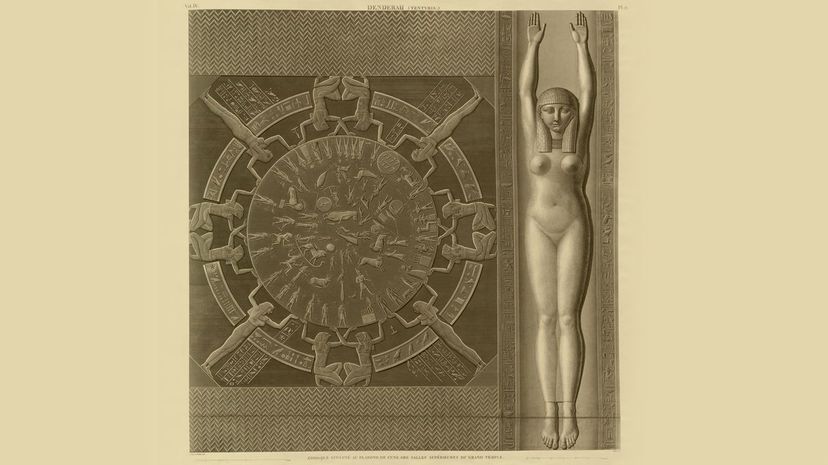
While historians think Mesopotamia influenced the Egyptian zodiac, Egypt still possesses the first known evidence of one. The Dendera Zodiac contains signs we know today, like the scorpion (Scorpio), the balance (Libra) and the bull (Taurus).